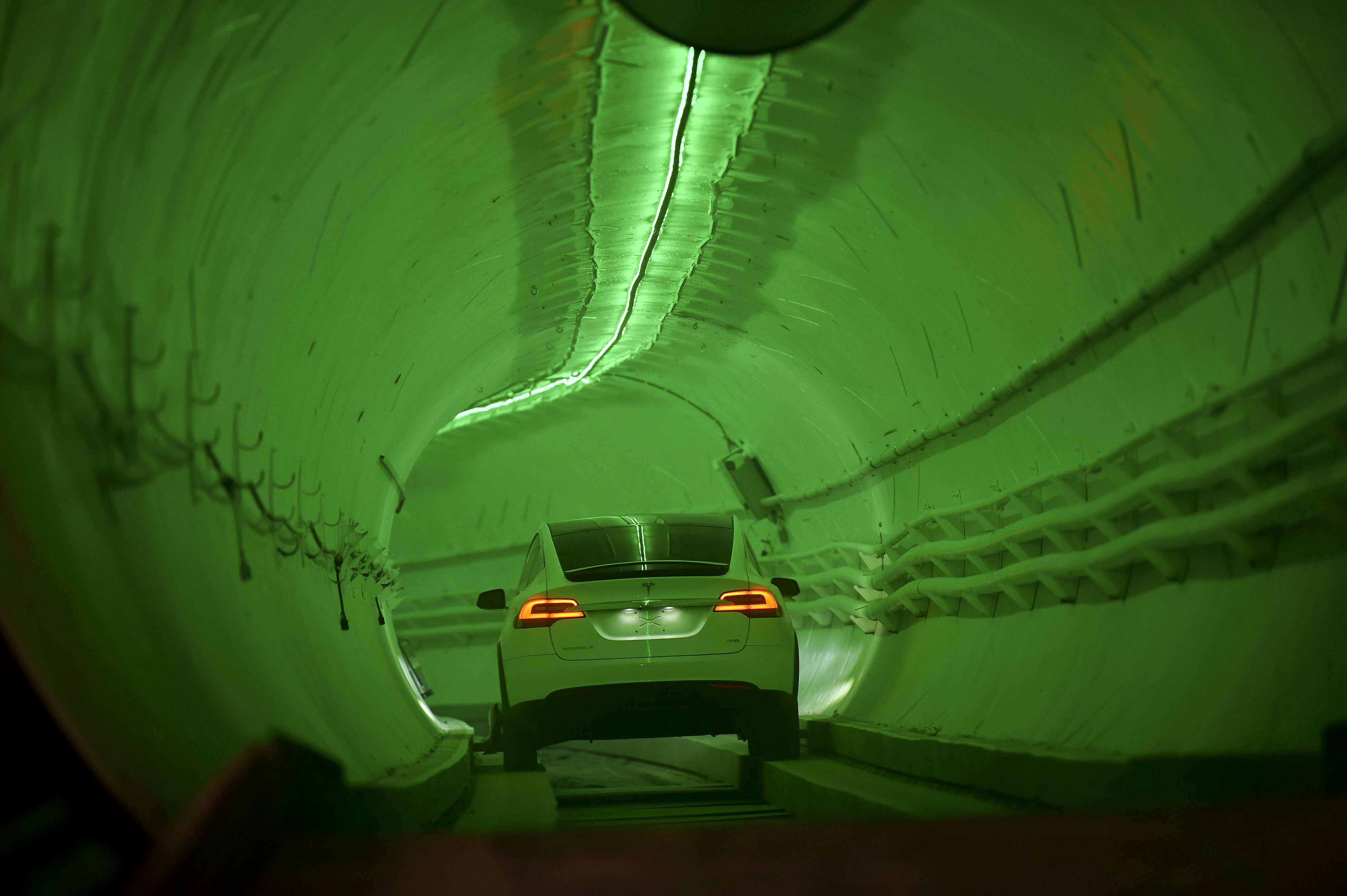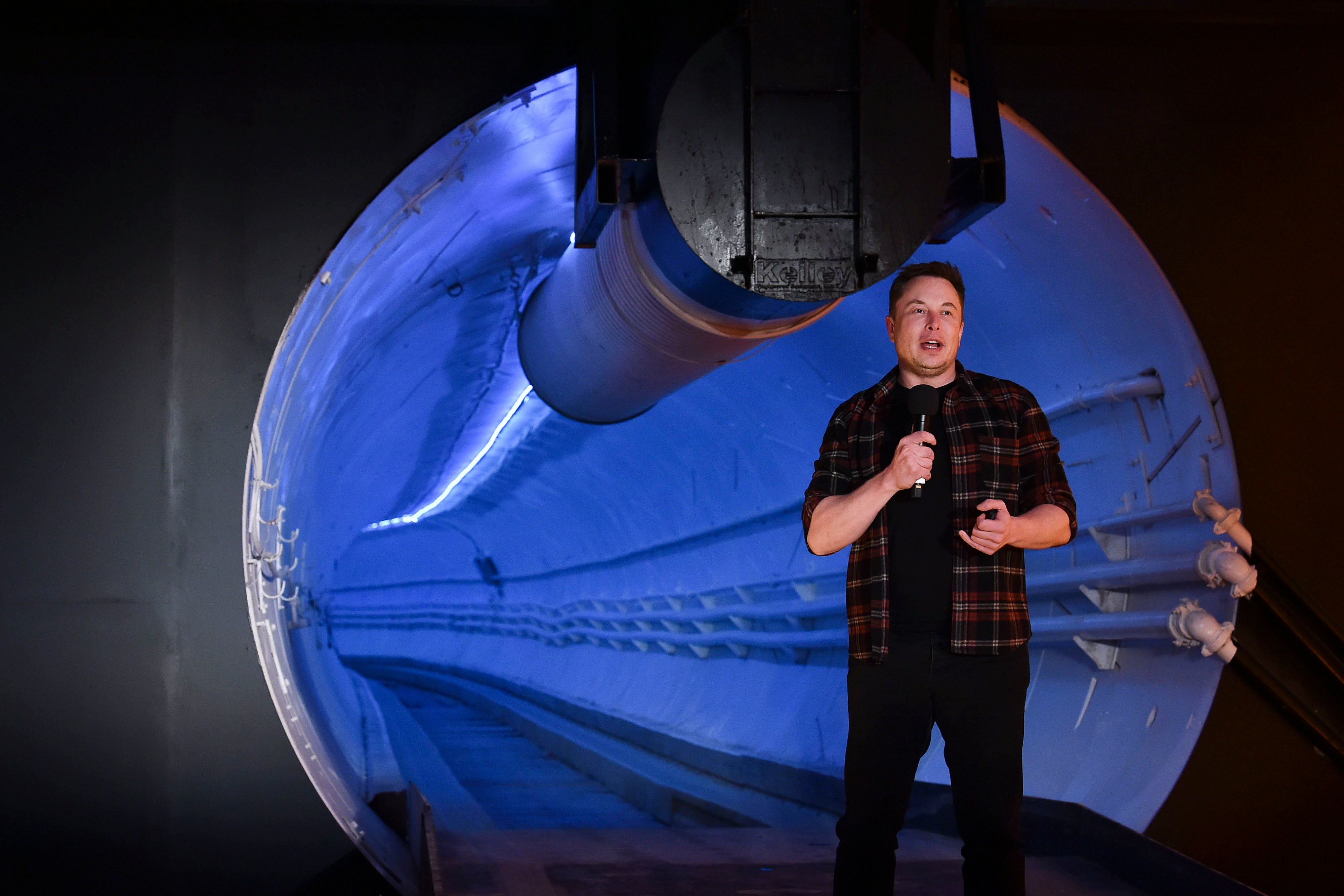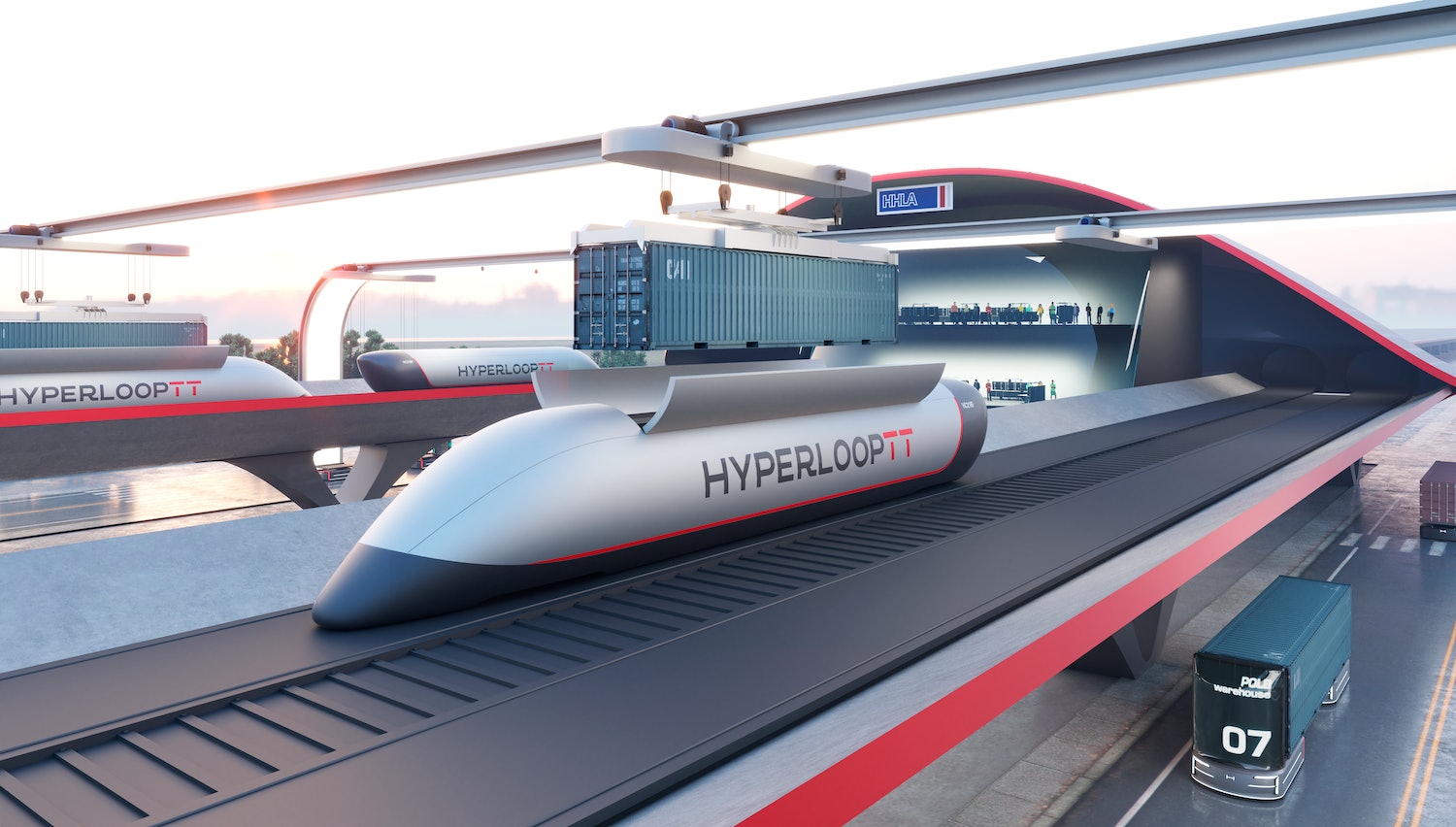
Think back to a bygone era of Elon Musk — when he talked less about blue checks on Twitter and more about blue-sky ideas to colonize Mars, reuse rockets, and tackle climate change.
One of his signature plans was the Hyperloop, essentially a high-speed train that’s whisked through a tube. Musk claimed his proposed Hyperloop could replace the six-hour drive from Los Angeles to San Francisco in just over 30 minutes.
In 2016, Musk’s Boring Company completed the construction of a mile-long test track at the SpaceX headquarters in Hawthorne, California. Now, the test bed for what Musk sees as revolutionary new transit will soon meet its end: Bloomberg reported on November 3 that it was torn down to make space for a SpaceX employee parking lot.

The Boring Company hasn’t revealed why exactly it shuttered the test track, but a few days later the company tweeted that “Full-scale Hyperloop Testing has begun.” The company didn’t indicate where exactly this testing was going down, but Electrek speculated that the track may be located in Texas (the site reported in April that the Boring Company had bought land near the Tesla Gigafactory in Austin). So, it’s possible that the company simply wants to move testing operations down south.
It’s also unclear why the image shows a Tesla in the test track, since the “Tesla in Tunnels” Loop is a separate (and far less ambitious) venture.
But outside of the Musk universe drama, it’s important to note that consortiums and companies around the world have continued humming along in the background, trying to push the dream a little further down the tube.
The Hyperloop saga so far

Hyperloop is a new iteration of a very old idea: For over two centuries, engineers have looked into ways to whoosh trains through tubes. They envisioned vehicles that travel through an air-free vacuum tunnel and theoretically avoid any air resistance, making transportation quicker and more efficient. Various “vactrain” systems were theorized, planned, and subsequently abandoned throughout the 20th century.
Musk first publicly talked up this technology in 2012. The next year, he released a broad plan to build a Hyperloop along the route of Interstate 5 between Los Angeles and the San Francisco Bay Area, using a combination of magnetic levitation (a series of magnets in the tunnel repel magnets attached to the train) and a near-vacuum tube to allow the passengers to reach speeds in excess of 700 miles per hour.
Critics quickly pounced on the project’s problems and impracticalities. Some argued the system would be pricier and require more energy than Musk had calculated, making the Hyperloop impractically expensive.
Plus, California has already invested years and millions of dollars in a stalled attempt to build a normal high-speed train line for the same journey.
Even if the Hyperloop proves to be safe and reliable, passengers may not exactly love the sensation of shooting down a tube faster than the speed of sound.
Not too long after Musk’s white paper was published, his Boring Company built the mile-long test track and hosted competitions in 2016, 2017, and 2019, inviting teams of engineers to build their own versions of Hyperloop vehicles and test them in California.
But as the years passed, the Hyperloop lost its hype. Musk’s original California dream seemed to go nowhere, giving many people the impression it was a flight of fancy he had no serious intention of seeing through.
Skeptics have noted that Musk’s own Boring Company has redirected its efforts toward tunneling small routes under cities rather than building tubes to connect them.
These “Loop” tunnels are meant for plain-old cars, not floating trains, though the company claims they are part of Musk’s planned buildup to the hyperloop, to which he restated his commitment in early 2022. The Loop tunnels have attracted plenty of industry criticism due to their high cost (between $100 million to $1 billion per mile) and potential safety risks.
Despite its promise for speedier transportation, the Loop has experienced underground traffic jams in Las Vegas. A Loop system is now being considered by the city of Fort Lauderdale, and proposals are in the works for Miami and Austin (plans for Los Angeles and Washington, D.C. seem to have been scrapped).
Even if the future of Musk’s Hyperloop remains unclear, he made his original proposal an open-source idea — encouraging other hyperloop enthusiasts around the world to pick up the ball and run with it. And they did just that.
Other companies in on the action

Picture a hyperloop that carries massive shipping containers instead of people. At the busy port in Hamburg, Germany, Hyperloop Transportation Technologies (HyperloopTT) envisions cars that pick up incoming shipping containers and dash them at lightning speed to their inland destinations, theoretically decreasing pollution and congestion.
The idea doesn’t sound as sexy as zooming from Los Angeles to San Francisco in the blink of an eye, but it may symbolize where the hyperloop is headed as a batch of new companies are attempting to make the wild concept succeed.
Los Angeles-based HyperloopTT launched in 2013, right after Musk’s original proposal. Nearly a decade later, the group has a test track in France, a commercial prototype in Dubai, and a project in Italy that will begin construction on its first 6.2 miles in 2023.
The company is now drafting up hyperloop legal guidelines with the European Commission, and is working with urban planners on a possible hyperloop that would travel from Chicago to Cleveland to Pittsburgh.
“Hyperloop evolved beyond the concept of its visionaries years ago,” says Andrés De León, CEO of HyperloopTT. “It is a project supported by governments, traditional transportation companies, and experts worldwide. Interest in this technology is at an all-time high with projects around the world.”
The past decade has seen plenty of stops and starts among the entrepreneurs hoping to send trains through tubes. While HyperloopTT announced in 2017 that aimed to begin operating its six-mile system in Dubai by 2020, the next year they pushed the start date back to 2023. And “potential deals” in India and China have failed to “come to fruition,” as reported by France 24.
A rival company to HyperloopTT, now known as Hyperloop One, built its own test track in North Las Vegas and ran hundreds of tests for its passenger hyperloop effort. But things went sideways in 2022, when the team ended its branding collaboration with Virgin, laid off more than 100 employees, and announced it would pivot to carrying cargo instead of people.
Around the world, more than a dozen potential hyperloop routes have been proposed, all of which remain in the planning stages.
‘Not if, but when’
All in all, worldwide ambitions for a functioning hyperloop may yet fail due to the immense design challenges still looming ahead.
A company like HyperloopTT has to perfect every technical aspect, from the cars to the stations to the tube and tracks, while simultaneously proving the system is safe for passengers, securing the legal right-of-way to build hundreds of miles of track, and convincing members of various communities strung along hundreds of miles to buy in.
Even so, the future creeps forward. Just last month, China said it would begin to build a 37-mile segment of hyperloop, perhaps a sign of more to come. Hyperloop backers know the track is long, but Andrés De León is undaunted.
“The question of hyperloop is not if, but when,” he argues, “and HyperloopTT is proud to play a leading role in developing a transportation system that has the potential to be cleaner, safer, and faster than current transportation systems.”







